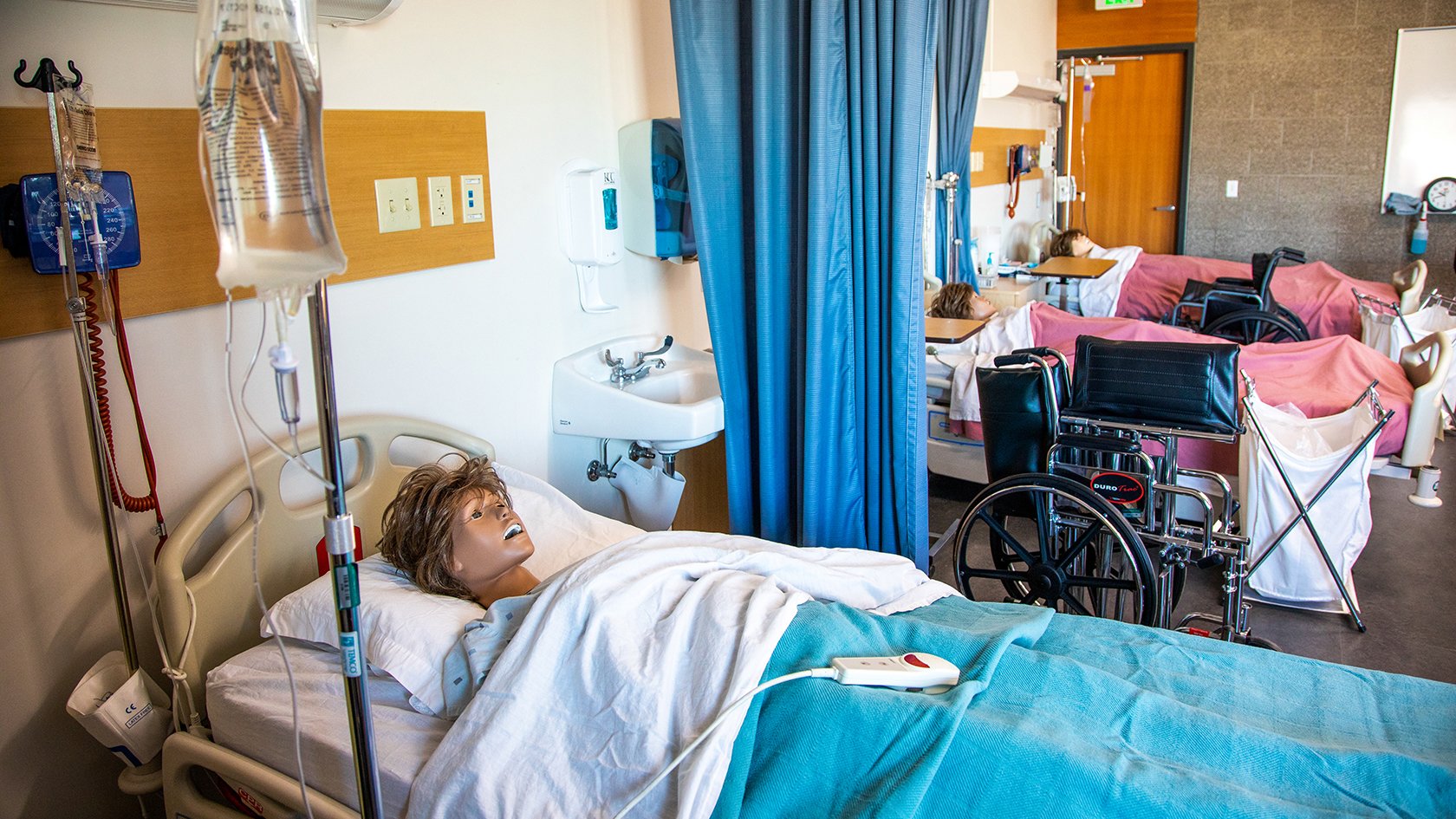KCC revives LPN nursing program, doubles nursing student enrollment
/Nursing dummies await students at Klamath Community College’s nursing classroom, where a new Licensed Practical Nursing program is being added this fall. (Image: Aurora Simpson)
Article by Kurt Liedtke, public information officer, Klamath Community College.
KLAMATH FALLS, Ore. - Addressing a community need for nursing candidates and staffing shortages, Klamath Community College starting in the fall term will revive its Licensed Practical Nursing (LPN) program – effectively doubling the number of nursing program graduates produced each year by KCC.
Previously offered as a fast-track licensure to begin seeking employment as a nurse, the LPN program was deactivated in 2015 per Board of Nursing mandate when KCC petitioned to launch a Registered Nurse (RN) program. Now following an extensive process for approval involving not only the Board of Nursing but also other regional nursing programs, soon KCC will train both an LPN and RN cohort each year – effectively doubling its output of nursing graduates. An additional cohort of students will be trained through the program in Lake County.
A Licensed Practical Nurse operates a supervised practice under a RN in a team effort, with the trend being that LPN’s take care of stable patients, while RN’s treat more severe or unstable patients.
While both cohorts go through a rigorous pre-requisite course load and scoring system prior to entry into the program, the LPN program is an accelerated health education needing only three terms (nine months) before being eligible for state licensure testing. In KCC’s RN program, the course load is two years. The salary difference between a LPN and RN is around $20,000-30,000.
“The profession has really had a pendulum swing back and forth between team nursing (LPN) taking care of a group of patients, to total patient care by the RN – no LPN’s,” said Allison Sansom, KCC dean of nursing and health sciences. “Right now we are at a spot post-pandemic where they don’t have enough RN’s, so places are scrambling to stretch RN’s. We solve that by going back to team nursing.”
According to Sansom, Klamath Falls has trended more towards a heavy reliance on LPN’s, but with no active LPN program since 2015 a shortage of candidates was inevitable, ultimately utilizing RN’s for LPN openings.
There is no work experience path for a LPN to advance to RN status, they must return to school. To address this need for career advancement, Sansom hopes next to develop an LPN-to-RN bridge program.
According to the State of Oregon Employment Department, LPN is listed as an Occupation in Demand in their 2020-21 publication. Currently there are 220 unfilled positions in Oregon for LPN’s posted through the State of Oregon employment department, and 335 other unfilled vacancies listed on other websites. Employment of licensed practical
and licensed vocational nurses is projected to grow 9% by 2029 – a faster increase in demand than the average for all other occupations tracked by OED.
Currently the closest active LPN program to Klamath County is at Rogue Community College. OHSU, which operates a RN training program at Oregon Tech, produces around 20 RN’s annually. This does not include an active LPN program.
The process to revive the KCC LPN Program was at the behest of the Nursing Program Advisory Committee to address the shortfall of LPN availability. The Committee consists of healthcare employers in the region, including Sky Lakes Medical Center, Klamath Tribes, Lake Health District, Klamath County Schools, Klamath Health Partnership, and the Klamath County Health Department.
Registering in the KCC Nursing program includes 45 credit hours of pre-requisites, heavy in science coursework, and a year of mutual coursework. However, each cohort will have different clinical experiences, with the LPN students able to graduate faster and seek licensure for employment. Sansom sees this as an opportunity to not only address a community need, but provide an alternative for students that may not otherwise be accepted into the highly competitive and strictly regulated RN cohort.
“I want to make sure we are educating all aspects of the nursing profession and churning out more students,” added Sansom. “Around the globe RN’s are leaving the profession due to burnout amidst COVID-19. We don’t have mandatory retirement ages, but our nursing workforce is aging and we are not bringing in as many new people as those who are retiring or leaving the profession.”
While LPN’s are sometimes utilized in acute care, typical employment is in long-term and skilled nursing care, community-based drug and alcohol detox units, home health, hospice care, and in health care provider offices.
Acceptance into the KCC LPN program requires at minimum completion of pre-requisite general education coursework while maintaining a 3.0 GPA or higher, and passing a 10-panel drug screen and criminal background check. Preference is given to students who are multi-lingual.
With KCC’s Nursing Program growing, there is also a need for qualified faculty. Experienced nurses interested in participating in the KCC Nursing Program should contact Sansom for instruction opportunities at 541-880-2223.
For more information about the KCC Nursing Program visit www.klamathcc.edu.


